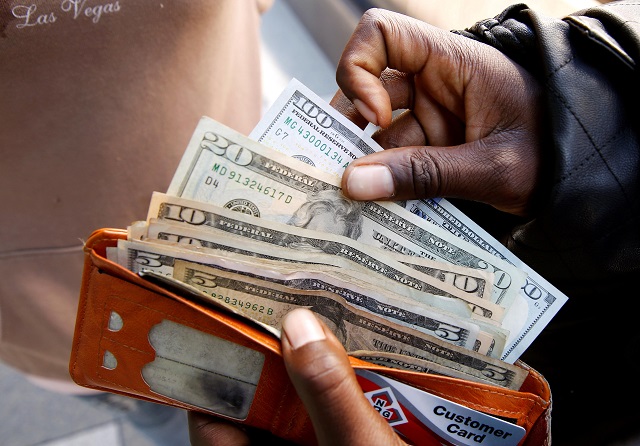
It’s time to push for greater debt transparency across all creditors and natural resource backed loans should no longer be used as collateral
Kampala, Uganda | RONALD MUSOKE | Africa’s total external debt hit the US$ 1 trillion-mark last year and is expected to rise up to US$ 1.13 trillion by the close of this year, according to the African Development Bank (AfDB).
Among the factors responsible for the upsurge in Africa’s external debt include; the rising costs of energy and food prices as a result of the Russian-Ukraine war and the rising costs of adapting to climate change.
These combined effects have led to 25 countries in Africa being either at the risk of high debt distress or in debt distress. As a result, the external debt service payments due for 16 African countries rose from US$21.2 billion in 2022 to US$22.3 billion in 2023.
The International Monetary Fund (IMF) has also recently sounded an alarm over Africa’s rising debt. The IMF noted in a recent brief that up to 22 African countries are either in debt distress or at risk of debt distress – meaning these countries are unable to fulfill their financial obligations to creditors. This, the IMF said, is nearly double the number of countries across the continent that were in some form of debt just a few years ago.
Uganda is among the 25 countries on the continent wallowing in debt. The country’s overall public debt has risen from Shs73.5 trillion (US$ 19.6bn) in June, last year, to Shs 86 trillion (US$ 22.8bn) by the end of the first quarter of 2023. Economists at Uganda’s central bank say Uganda’s debt servicing bill is expected to rise from US$ 500 million in FY 2022/23 to about US$ 1bn by the end of FY 2024/25.
Speaking in Paris on June 20 during a meeting of the Paris Club (a group of donor countries that includes; the U.S, Japan, the UK and other OECD members) on the theme: “Evolution of Debt Landscape over the past 10 Years in Africa,” Dr. Akinwumi Adesina, the President of the African Development Bank Group noted that the structure of Africa’s debt has changed dramatically in the past decade or more, highlighting a trend that started in the mid-2000s.
He also noted that the tightening of monetary policies in the US and Europe has led to the rising of interest rates which has also led to an up-shoot in the cost of debt servicing.
“First, non-Paris Club bilateral creditors and commercial creditors are increasingly becoming major sources of Africa’s sovereign debt,” he said. “While bilateral debt represented 52% in 2000, this declined to 25% by 2021; with commercial debt’s share of total debt increasing from 17% in 2000 to 43% in 2021.”
Meanwhile, yearly bond issuances in Africa increased from an average of US$10 billion annually in the early 2000s, to about US $80 billion annually by 2016–2020. This trend was spurred by the very low global interest rates, with investors looking for yields in emerging markets.
“There has been a very rapid growth in debt owed to China. The share of China’s debt rose from just 1% of total debt in mid-2000s to 14% of total external debt by 2021. Most of this debt is for infrastructure,” Dr Adesina said.
“Third, average interest rates on debt have diverged significantly over time, with multilateral debt at 1%; bilateral debt at 1.2%; China debt at 3.2%; and private debt at greater than 6.2%. The tenure on debt has also widened between creditors.”
Dr. Adesina noted that while official debt (62% of the debt) used to mature over 30 years, the tenure for bonds have averaged 10 years. “We now have a more shorter-term debt with higher interest rates,” he said.
The fifth factor, he noted, is the ever-increasing percentage of debt which is now in form of resource-backed loans. For example, over the course of 14 years (2004-2018), natural resource-backed loans worth US$ 66 billion were signed up by African countries with most of the loans being backed by oil, minerals, and commodities. But then, a commodity crash happened in 2014 and pushed 10 out of the 14 countries that used natural resource backed loans into serious debt.
Remedies for African debt
According to the African Development Bank technocrats, given the diverse nature of creditors, with most of them being outside of the Paris-Club, it has become more complex to address debt treatment, debt restructuring and debt resolution.
“The process has become more complicated, as interests of creditors diverge and there is need to expand the Paris Club to include the commercial and other-non-Paris club creditors,” Dr. Adesina said.
“We need to make the G20 Common Framework work and speedily concluded for Zambia, Chad, Ethiopia, and Ghana, to build momentum for debt treatment for all creditors.”
He added: “There is need for greater debt transparency across all creditors (and) given their non-transparent nature, asymmetry of power in negotiations and compromises of countries futures, natural resource backed loans should no longer be used.”
“We must (also) expand market-derived concessional financing to support countries. This will reduce the level of dependency on expensive short-term debt by countries.”
Dr. Adesina suggested that the African Development Fund (ADF) market-option of the African Development Bank Group can help mobilize US$27 billion for the low-income countries.
He further argued that greater use of partial credit guarantees at scale can help countries to access capital markets and issue bonds at lower coupon rates and longer maturities.
For example, Dr Adesina noted that the African Development Bank used partial credit guarantees of US$375 million to support the issuance of US$500 million Panda bond by Egypt.
“We also used a partial credit guarantee of €195 million to de-risk a €350 million sustainable development loan from Deutsche Bank to Benin.”
Dr Adesina also thinks the Special Drawing Rights (SDR) re-channeling to the African Development Bank can be leveraged by the Bank by 3–4 times to deliver greater financing for African countries.
He said the financial model for SDR re-channeling, with a liquidity support agreement, developed by the Bank and the Inter-American Development Bank has now met the reserve asset status of the IMF. What is needed now is for five countries to provide SDRs to the Bank, Dr. Adesina said.
“Efforts should be made to tackle systemic risks in Africa. Africa is the only region without liquidity buffers to protect it against shocks,” Dr. Adesina said.
“To change this, the African Development Bank and the African Union are working together to establish an African Financial Stability Mechanism. Such a homegrown mechanism will mutualize our funds and ensure that we avoid spillover effects that come from global shocks.
“Let’s make sustainable debt work well for countries, let’s support greater domestic resource mobilization for countries and let’s coordinate better and lower the time and costs of overly long debt resolutions. The debt treatment of the 1990s took over a decade to conclude, which led to the lost decade in Africa’s development,” Dr. Adesina said.
 The Independent Uganda: You get the Truth we Pay the Price
The Independent Uganda: You get the Truth we Pay the Price



